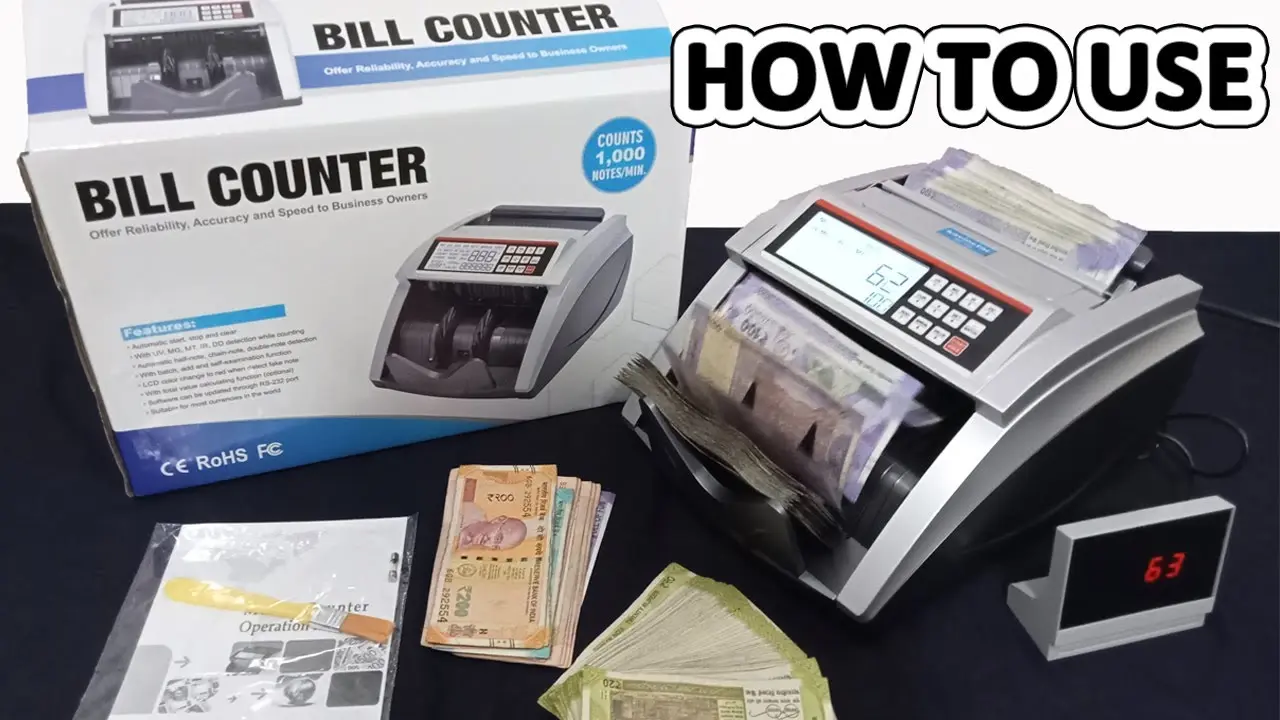A money counter is a device that counts the number of bills and coins in a given amount of cash. It can also detect counterfeit bills and sort them by denomination. Money counters are useful for businesses, banks, and individuals who deal with large sums of cash regularly. In this article, we will explain how to use a money counter and what are the benefits and drawbacks of using one.
Types of Money Counters
There are different types of money counters available in the market, depending on the features and functions they offer. Some of the common types are:
- Basic money counters: These are simple devices that only count the number of bills or coins in a stack. They do not detect counterfeit bills or sort them by denomination. They are usually cheaper and faster than other types of money counters.
- Mixed bill counters: These are devices that can count and sort bills by denomination. They can also detect counterfeit bills using ultraviolet, magnetic, or infrared sensors. They are more expensive and slower than basic money counters, but they provide more accurate and detailed results.
- Coin counters: These are devices that can count and sort coins by denomination. They can also wrap coins in paper rolls for easy storage and transport. They are usually smaller and lighter than bill counters, but they can be noisy and jam easily.
How to Use a Money Counter
The exact steps to use a money counter may vary depending on the model and type of the device, but the general process is as follows:
- Separate the bills or coins by denomination: Before using a money counter, you should separate the bills or coins by denomination into different stacks. This will make the counting process faster and more accurate. If you are using a mixed bill counter, you can skip this step as the device will sort the bills automatically.
- Select the currency and mode: Next, you should select the currency and mode of the money counter. Some money counters can handle multiple currencies, such as USD, EUR, GBP, or INR. You should also choose the mode of counting, such as adding, batching, or counting only.
- Place the bills or coins into the hopper: The hopper is part of the money counter where you place the bills or coins to be counted. You should make sure that the bills or coins are aligned properly and not folded or damaged. You should also avoid overloading the hopper as this may cause jams or errors.
- Start the counting process: After placing the bills or coins into the hopper, you should press the start button to begin the counting process. The money counter will display the number of bills or coins and their total value on a screen. You can also print out a receipt or report if needed.
- Remove the counted bills or coins: Once the counting process is finished, you should remove the counted bills or coins from the stacker or reject tray. The stacker is where the accepted bills or coins are stored, while the reject tray is where the counterfeit or suspicious bills or coins are ejected. You should check the reject tray for any false positives or negatives and verify them manually.
Benefits and Drawbacks of Using a Money Counter
Using a money counter has several benefits and drawbacks that you should consider before buying one. Some of them are:
- Benefits:
- It saves time and effort by counting large sums of cash quickly and accurately.
- It reduces human errors and mistakes by eliminating manual counting.
- By identifying fake bills and grouping them according to denomination, it stops fraud and theft.\
- It improves efficiency and productivity by providing detailed reports and receipts.
- Drawbacks:
- It costs money to buy and maintain a money counter.
- It requires electricity and space to operate a money counter.
- Wear and tear or improper use could cause it to malfunction or fail.
- It may not be compatible with all types of bills or coins.
Conclusion
A money counter is a handy device that can help you count and sort cash easily and accurately. However, it also has some limitations and drawbacks that you should be aware of before using it. You should choose a money counter that suits your needs and budget, and follow the instructions carefully to avoid any problems.

